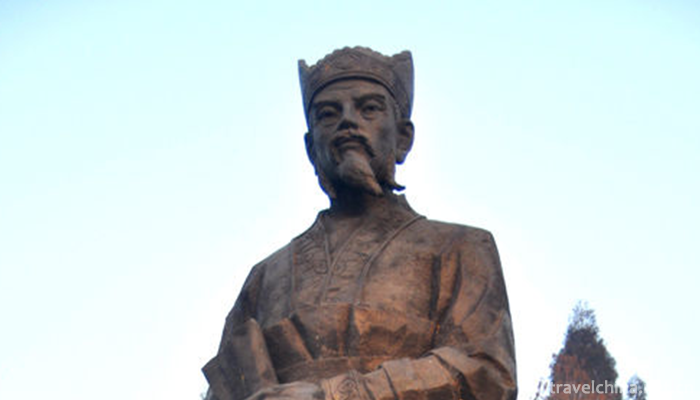Legend of Liu Bowen
Legend of Liu Bowen
Liu Bowen's legend is based on the traditional folk oral literature of Liu Ji, a historical figure, spread throughout the whole country in eastern Zhejiang, with Qingtian, Wencheng and other southern Zhejiang areas as the core areas.
On June 7, 2008, Liu Bowen's legend was approved by the State Council to be included in the second batch of national intangible cultural heritage list.
Historical origin
Liu Ji, Zi Bowen, a famous politician, litterateur, thinker and militarist in late Yuan and early Ming Dynasty, was born in Wuyang Village, Nantian Mountain, Qingtian County, Zhejiang Province (now Wencheng County), and was the founder of the Ming Dynasty. The legend about him was born when he was alive, and the earliest records in writing should be included in Huang Bosheng's Liu Gong Xing Zhuo in the early Ming Dynasty. Over the past 600 years, Liu Bowen's legend has been enriched by folk oral creation and records of literati in past dynasties. At present, there are no more than hundreds of legends collected in Qingtian, Wencheng and other places, most of which are oral inheritance.
primary coverage
The contents include Liu Ji's family background, wisdom and learning, ingenuity and ingenuity, anti-riot and peace, the achievements of founding the country, and the local customs of his hometown, and many other aspects.
Inheritance value
The legend of Liu Bowen has a high literary value and has a great influence on the history of Chinese folk literature; the wisdom story, which occupies a large proportion, has an important cognitive value; the legend of Liu Bowen is a model of traditional morality, and his story has a certain moral enlightenment effect; some historical factors contained in the legend can make up for the inadequacy of the record of Liu Ji in the official history. Therefore, it has certain historical research value.
Inheritance status
There have been many different versions of Liu Bowen's legends in the past, but there are still many related legends that have not been well documented and sorted out. With the passage of time, there are fewer and fewer related narrators. If they are not rescued and protected in time, these oral folk literature will probably be lost.


-
1.Legend of Meng Jiangnu
Meng Jiangnu's story, as one of the four love legends in ancient China (the other three are Niulang and Zhinu, Liang Shanbo and Zhu Yingtai, and The Legend of White Snake), has been widely circulated
Time 2018-12-23 -
2.Drifting in Baotianbang Canyon
Baotianbang Canyon Drifting Scenic Area is located in Neixiang County, Nanyang City, Henan Province, which is an excellent tourist city in China. Baotianman is the only World Biosphere Reserve in Hena
Time 2019-01-02 -
3.Hunan Provincial Museum
Hunan Museum is the largest museum of history and art in Hunan Province. It covers an area of 49,000 square meters and has a total floor area of 91,000 square meters.
Time 2019-01-16 -
4.Kaiping Garden
Kaiping Liyuan is located in Bohua Village, Tangkou Town, Kaiping City, Guangdong Province. It is a private garden of Xie Weili, an overseas Chinese traveling to the United States in Tangkou Town
Time 2019-01-29 -
5.Ah Xi Xian Ji
"Xianji" is an epic of the Ashi people of the Yi tribe, which is spread orally among the Ashi people in the Xishan area of Maile City, Yunnan Province. "Xianji" is the transliterat
Time 2019-03-28 -
6.Daur Costume
The Daur nationality has a long history and agricultural culture in northern China. Daur garments are greatly influenced by Mongolian and Manchu nationalities.
Time 2019-04-22 -
7.Eighteen General Martial Arts
A traditional term of Chinese Wushu, also known as "Eighteen Weapons" and "Eighteen Weapons", is commonly used in ancient Chinese operas and novels, referring to the use of various
Time 2019-06-15 -
8.Uzbek Ehilai and Yelai
Uzbek Ehilai and Yelai are mainly distributed in Kashgar, Shache, Yecheng and Yining, Ili Kazakh Autonomous Prefecture, Xinjiang Uygur Autonomous Region. Uzbek people have excellent music and dance cu
Time 2019-06-29 -
9.Construction Techniques of Yanmen Folk House
Yanmen folk house construction technology is a traditional skill with local characteristics in Xinzhou, Shanxi Province. It was listed in the third batch of intangible cultural heritage list in 2011.
Time 2019-07-10 -
10.Han Yu
Han Yu (768 - 824 December 25th) retreated. Henan Heyang (now Henan Province Mengzhou People. Claiming to be "Changli," the world is called "Han Changli" and "Mr. Changli"
Time 2019-09-07 -
11.Neijiang climate
Neijiang City belongs to subtropical humid monsoon climate. Affected by the basin and the natural environment, it has the characteristics of mild climate, abundant rainfall, sufficient light and heat, and long frost free period. It is warm in winter and hot in summer,
Time 2020-12-16 -
12.Mineral resources in Dazhou
As of 2012, 38 kinds of minerals have been found in Dazhou City, with more than 250 producing areas. Among them, there are 28 proven reserves, 146 producing areas, 28 exploitable and 21 developed. The proven reserves of stone coal are 763 million
Time 2020-12-20